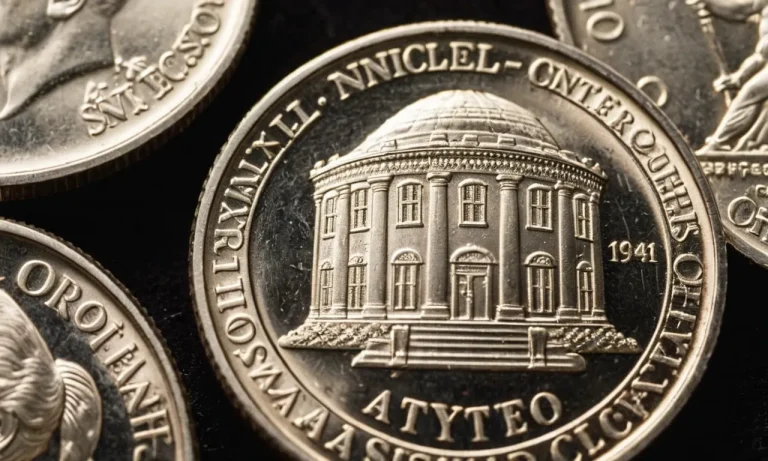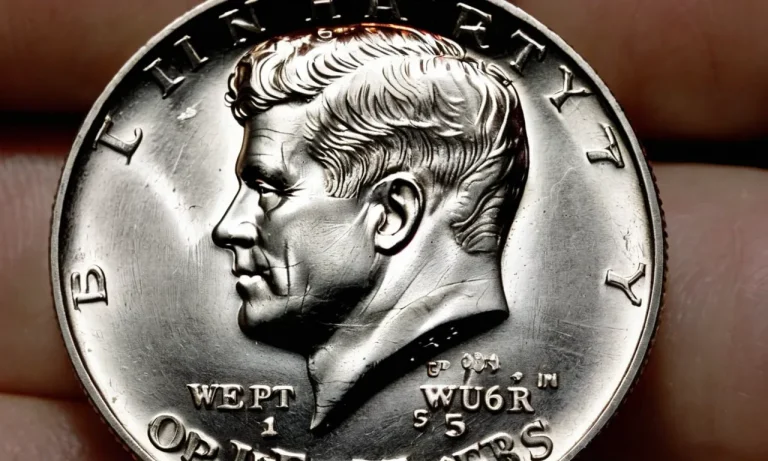How to tell if a 10-dollar bill is real? Counterfeit money is an ongoing issue that causes problems for businesses and consumers. Being able to quickly identify fake bills is important for anyone who is handling cash on a regular basis.
If you’re short on time, here’s a quick answer to your question: examine the bill for key security features like watermarks, color-shifting ink, raised printing, and ultraviolet images that are very difficult for counterfeiters to duplicate.
Comparing the bill side-by-side to a known genuine bill can also help spot inconsistencies.
In this comprehensive guide, we will cover all the vital information you need to determine if a $10 bill is real or counterfeit. We will discuss the security features to check on $10 bills from the 1996 and 2004 redesigns, as well as provide visual examples so you know exactly what to look for.
2004 Style $10 Bills
Security Strip
The 2004 style $10 bills feature a security strip that runs vertically along the left side of the bill. When held up to light, the security strip glows blue. This is a great way to do a quick check that a $10 bill is potentially real.
Counterfeiters find it very difficult to reproduce the correct color-changing ink used in the security strips.
Watermark
There is also a watermark visible when the bill is held up to light. On the 2004-style $10s, the watermark is a faint image of Alexander Hamilton’s face looking towards the left. This watermark can be seen on both sides of the bill.
It serves as another good quick check since most counterfeit notes lack watermarks or have incorrect ones.
Color-Shifting Ink
The number “10” in the bottom right corner on the face of the bill is printed with color-shifting ink. When viewed straight on, it appears coppery-brown in color. But when the bill is tilted, the number “10” will shift to a greenish color.
This is very difficult for even sophisticated counterfeits to color shift. So checking for the correct color shift can confirm authenticity.
Raised Printing
Much of the printing on legitimate 2004-series $10 bills is raised. You can feel the texture and slight relief on elements from the Treasury Seal to the denomination numbers. On counterfeits, this kind of raised printing effect is often flattened or completely missing.
So tactile examination is another authentication technique.
1996 Style $10 Bills
Watermark
The 1996 style $10 bills feature a watermark of Alexander Hamilton that is visible when holding the bill up to the light. The watermark portrait of Hamilton matches the engraved portrait on the front of the bill and serves as a security feature to deter counterfeiting.
An authentic watermark should be detailed and match the formal portrait on the bill’s face.
Security Thread
There is a security thread running vertically to the left of Hamilton’s portrait. The thread is imprinted with the text “USA TEN” and tiny 10s that alternate direction. When held up to the light, the thread will appear as a solid blue line.
Counterfeit bills may attempt to mimic the security thread but with differences in the text or a lack of fine details. According to the U.S. Bureau of Engraving and Printing, over 70% of counterfeit $10 bills lack an authentic-looking security thread.
Microprinting
Genuine 1996-style $10 bills have microprinting on Hamilton’s coat between the borders with tiny “10” symbols and “The United States of America.” Quality counterfeits may attempt microprinting but lack the sharpness and fine details of authentic bills.
Use a magnifying glass to inspect the microprinting quality.
Color-Shifting Ink
The number “10” in the lower right corner on the face of $10 bills printed since 1996 is printed with color-shifting ink. When viewed from different angles, the color of the number shifts between copper and green. This effect cannot be accurately reproduced by color photocopiers or computer scanners.
| Feature | Genuine $10 Bill | Counterfeit Warning Sign |
|---|---|---|
| Watermark | Detailed portrait of Hamilton matching engraved portrait on face | Watermark portrait lacks fine details or does not match the formal portrait |
| Security Thread | Embedded thread with “USA TEN” and 10s woven in; the thread is solid blue from a light box view | Thread text does not match or align; lacks color-shift property |
| Microprinting | Tiny “10” symbols and U.S. spelling between portrait borders with crisp details under magnification | Microprinting lacks sharpness; visible symbols do not match authentic microprinting |
| Color-Shifting Ink | Number 10 changes between copper and green when the bill tilted | No color-shifting effect observed |
Carefully checking these security features on 1996-series $10 bills provides a good method to screen for counterfeits. However, potential fakes are getting increasingly sophisticated so it helps augment inspection with devices like counterfeit bill pens when uncertain.
Using Counterfeit Detector Pens and Scanners
Counterfeit detector pens and scanners are great tools for quickly evaluating whether a $10 bill is real or fake. Here’s an overview of how these handy devices work:
Counterfeit Detector Pens
These pens contain a special ink that reacts to the paper used in real US currency. When you draw a line across the bill with the pen, here’s what happens:
- If the ink turns yellow/orange, the paper contains starch—indicating it’s likely real money.
- If the ink stays clear or develops a dark spot, the paper does not contain starch—suggesting it could be counterfeit.
The ink is formulated not to penetrate real US bill paper, but to react to the starch instead. Pretty clever! However, keep in mind that some advanced counterfeits use washed $1 bills printed over with higher denominations.
Since the paper originated from a real $1 bill, the detector pen test could show a false positive. Thus, the pen should not be relied on as the sole determinant of authenticity.
Counterfeit Bill Detector Scanners
These electronic devices use magnetic, ultraviolet (UV), and infrared sensors to evaluate several security features embedded in legitimate currency. They’re able to detect things human eyes can’t see, such as:
- Microprinting – Miniscule text printed around the portrait that’s readable under magnification
- Color-shifting ink – The numeral 10 in the lower right corner changes from copper to green when tilted
- Watermarks – Faint images only visible when held up to light
- Security threads – Polymer strips embedded in the paper that glow under UV light
By instantly cross-checking multiple hard-to-duplicate safety features, counterfeit bill scanners provide advanced detection capabilities. Professional-grade devices used by banks, retailers, and law enforcement can identify even highly deceptive fakes with ~98% accuracy.
However, consumer-targeted handheld models in the $100-200 range may have limitations distinguishing washed bills and professionally produced counterfeits.
For optimal security, the prudent approach is to use both a detector pen and scanner in tandem. This provides quick first-line screening along with more robust verification for minimal added cost. Following fundamental security best practices (handling bills carefully, confirming watermarks, checking for color-shifting ink, etc.)
also helps improve human detection capabilities. Diligence across multiple fronts is key to reliably spotting fake tenners.
Visual Inspection Guidelines
Portrait and Images
The genuine $10 bill features a portrait of Alexander Hamilton on the front and the U.S. Treasury Building on the back. Examine the details of the portrait, such as the face, hair, clothing, etc., to ensure a clear and accurate depiction. The images should be crisp and well-defined.
Blurry or distorted portraits, buildings, or details often indicate counterfeit currency.
Borders
Run your finger along the borders of the bill. Authentic bills have raised markings that you should be able to feel. These raised borders are produced through a process called intaglio printing that applies ink to engraved plates. If the borders feel perfectly smooth or flat, the bill is likely a fake.
Text
Closely study all text on the note, including “The United States of America,” “Ten Dollars,” “Federal Reserve Note” and more. Misspellings, altered text, or text that appears micro printing counterfeit money.
The micro printing, very tiny text located around Hamiltoar and coat buttons, should be clearly legible on real bills but blurry or missing altogether on fake designs.
The feel of the Paper
Authentic $10 bills have crisp, cloth-like paper made of 75% cotton and 25% linen. Rub the paper – it should feel thick, not flimsy. Counterfeits often use lower-quality pulp paper that feels waxy or slippery.
You can also hold the note up to the light to view the security thread running vertically on the right side. This plastic strip should be embedded, not printed, into the paper. The watermark of Alexander Hamilton’s face can also be seen when holding the bill up to the light.
If still uncertain about the bill’s legitimacy after a visual inspection, consider checking for the following additional security features:
- Color-shifting ink – $10 bills have color-shifting numbers on the lower right corner that switch from copper to green when tilted.
- Raised printing – Drag your finger over the bill numbers and website text – you should feel slight ridges on authentic bills.
- Ultraviolet glow – Under a UV black light, the security thread and Hamilton’s face on will glow.
While counterfeiters are getting more sophisticated, carefully inspecting a $10 bill and becoming familiar with embedded security features can ensure real from fake.
Law enforcement should be notified immediately in cases of confirmed or suspected counterfeit currency.
What To Do If You Detect a Counterfeit
Discovering a counterfeit $10 bill can be alarming. However, there are important steps you should take if you suspect you have a fake bill.
Inspect the Bill Closely
Carefully examine the suspected fake bill and compare it to a known genuine $10 bill. Check for differences in color, paper quality, and security features like the security strip and watermark, and examine the tiny details in portraits and images.
Conduct a Counterfeit Pen Test
Use a counterfeit detection pen, which contains a special iodine solution, on an inconspicuous corner of the bill. If the ink turns yellowish or light brown, the paper does not contain starch and may be counterfeit. Genuine bills turn black or stay yellow from the starch-laced paper.
Contact Local Authorities
If your inspection and pen test determine the $10 is likely counterfeit, contact your local police department or the U.S. Secret Service. Reporting fake bills helps these agencies track and shut down counterfeiting operations. You may need to provide a detailed report about where you obtained the suspicious bill.
Seek a Replacement Bill from the Source
If you received the phony bill as payment, return it to the source and politely ask them to replace it with a genuine $10 bill. Most people and businesses will quickly correct an inadvertent passing of a fake bill.
Discard the Counterfeit Bill
The Secret Service asks that possible counterfeits be handed over to authorities rather than kept or spent. If authorities are not interested in collecting the specific bill, you should discard the fake money instead of attempting to spend it as this is illegal.
Exercising caution and reporting fakes reduces the spread of counterfeit money. If a $10 bill makes you suspicious, taking quick action can protect not just you but the overall integrity of U.S. currency.
How To Tell If A 10-Dollar Bill Is Real – Conclusion
Being able to identify genuine currency is an important skill for any cash handler to develop. By familiarizing yourself with the security features found on $10 bills from the 1996 and 2004 redesigns, you will be well-equipped to determine authenticity.
If you come across a bill that seems suspect, conduct a thorough side-by-side comparison with a known real bill and check for any differences. Counterfeits often have tiny flaws that give them away upon close inspection.
If you determine the bill is fake, follow the proper protocols by marking it, filing a report, and taking it out of circulation.




